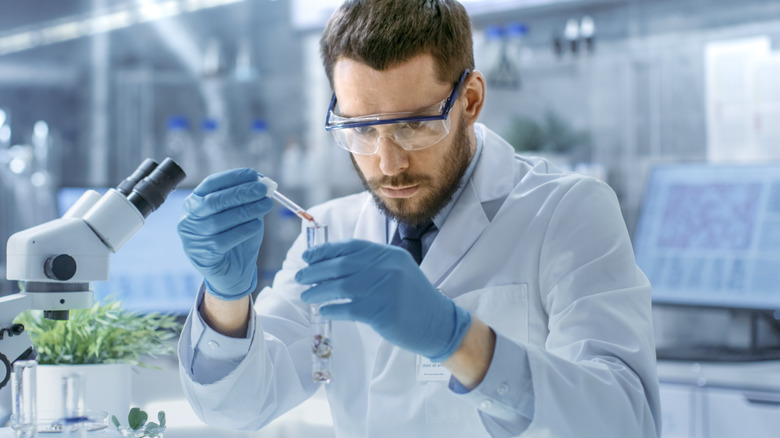Reasons For Error In A Chemistry Experiment
To a scientist, the definition of "error" is, in some cases, different from the normal use of this term. An error in chemistry still often means a mistake, such as reading a scale incorrectly, but it is also the normal, unavoidable inaccuracies associated with measurements in a lab. Using this expanded definition, there are many different sources of error in an experiment or scientific process.
Human Error
Human Error
A few errors in chemistry experiments are due simply to mistakes on the part of the person performing the work. There are an endless number of potential mistakes in lab work, but some of the most common include misreading gauges, making math mistakes during dilutions and other types of calculations and spilling chemicals during transfer. Depending on the type of mistake and the stage at which it happens, the associated degree of error in the experimental results will vary widely in magnitude.
Improper Calibrations
Improper Calibrations
Incorrect or non-existent calibration of instruments is another common source of error in chemistry. Calibration is the process of adjusting or checking an instrument to ensure that the readings it gives are accurate. To calibrate a weigh scale, for example, you might place an object known to weigh 10 grams on the scale, then check that the scale reads 10 grams. Instruments which are not calibrated or are improperly calibrated are not uncommon in chemical labs and lead to wrong results.
Measurement Estimation
Measurement Estimation
In the expanded meaning of "error" in science, the process of estimating a measurement is considered a source of error. For example, a technician filling a beaker with water to a given volume has to watch the water level and stop when it is level with the filling line marked on the container. Unavoidably, even the most careful technician will sometimes be slightly over or below the mark even if only by a very small amount. Similar errors also occur in other circumstances, such as when estimating the end point of a reaction by looking for a specific color change in the reacting chemicals.
Measurement Device Limitations
Measurement Device Limitations
Chemists also consider the limitations of measurement equipment in a lab as a source of error. Every instrument or device, no matter how accurate, will have some degree of imprecision associated with it. For example, a measuring flask is provided by the manufacturer with an acknowledged imprecision of from 1 to 5 percent. Using this glassware to make measurements in a lab therefore introduces an error based on that imprecision. In the same manner, other instruments such as weigh scales also have inherent imprecision that unavoidably causes some error.
Cite This Article
MLA
Judge, Michael. "Reasons For Error In A Chemistry Experiment" sciencing.com, https://www.sciencing.com/reasons-error-chemistry-experiment-8641378/. 27 April 2018.
APA
Judge, Michael. (2018, April 27). Reasons For Error In A Chemistry Experiment. sciencing.com. Retrieved from https://www.sciencing.com/reasons-error-chemistry-experiment-8641378/
Chicago
Judge, Michael. Reasons For Error In A Chemistry Experiment last modified August 30, 2022. https://www.sciencing.com/reasons-error-chemistry-experiment-8641378/
